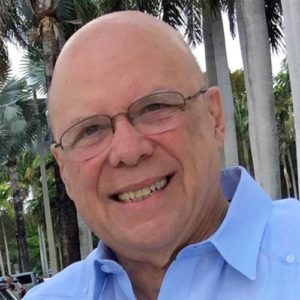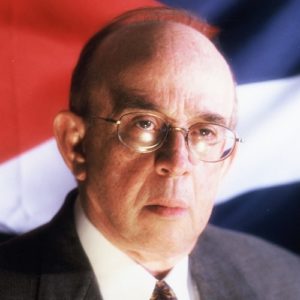 According to the Baptism Certificate from Santiago de Cuba’s Cathedral, dated January 19, 1935, Fidel Castro was born on August 13, 1926 in Birán, Oriente. At his birth, and for the next seven years, his father, Ángel, was married not to his mother, but to Maria Luisa Argote, a teacher and the mother of Fidel’s two half siblings, Pedro Emilio and Lidia. During his early years, he was known as Fidel Ruz. His mother, Lina Ruz, had started working as a maid in Maria Luisa and Angel’s household at the age of fourteen. Angel was an illiterate “Gallego” that fought as a soldier in Cuba against the independence fighters. His first job was in the construction of the railroad tracks of United Fruit. The company was linking its immense land holdings, including the Boston and Preston Sugar Mills. Later, Ángel went into business for himself, walking the railroad tracks and selling water, lemonade and fruits to the cane cutters. A booming economy allowed the enterprising Ángel to save enough money to buy a farm at Birán near Mayarí. Among his few trusted friends was Fidel Pino Santos. A self-made, wealthy and politically prominent in “Oriente,” Ángel felt as if Fidel Pino Santos was his elder brother and named his third child after him, Fidel.
According to the Baptism Certificate from Santiago de Cuba’s Cathedral, dated January 19, 1935, Fidel Castro was born on August 13, 1926 in Birán, Oriente. At his birth, and for the next seven years, his father, Ángel, was married not to his mother, but to Maria Luisa Argote, a teacher and the mother of Fidel’s two half siblings, Pedro Emilio and Lidia. During his early years, he was known as Fidel Ruz. His mother, Lina Ruz, had started working as a maid in Maria Luisa and Angel’s household at the age of fourteen. Angel was an illiterate “Gallego” that fought as a soldier in Cuba against the independence fighters. His first job was in the construction of the railroad tracks of United Fruit. The company was linking its immense land holdings, including the Boston and Preston Sugar Mills. Later, Ángel went into business for himself, walking the railroad tracks and selling water, lemonade and fruits to the cane cutters. A booming economy allowed the enterprising Ángel to save enough money to buy a farm at Birán near Mayarí. Among his few trusted friends was Fidel Pino Santos. A self-made, wealthy and politically prominent in “Oriente,” Ángel felt as if Fidel Pino Santos was his elder brother and named his third child after him, Fidel.
In 1930, Lina and Angel sent Ramón, Angela and Fidel to Santiago de Cuba where they lived in the dilapidated house of the Haitian Consul, Hippolyte Hibbert. Castro’s formal schooling began in first grade at «La Salle» Christian Brothers school where he was enrolled through Pino Santos’ influence although he had not yet been baptized.
As he grew taller, Fidel became a bully and even attacked a teacher. He was immediately expelled from the school. The onset of his severe outburst of violence can be traced back to his childhood and adolescence. Incontrollable aggressive, impulsive. Later in his life even his younger brother Raul was intimidated by Fidel’s violent behavior.
In order to find another school for Fidel, Pino Santo’s influence was used again, and Castro was enrolled at Dolores Jesuits School where the old Santiago families sent their children.
For the historian Will Durant, the Jesuits had been “the most successful educational order in history” and their graduates would become outstanding leaders in almost every walk of life. This close-knit, ascetic organization was vitally concerned with discipline, obedience and loyalty. Founded as a military order, members had to be always ready to fight as the best soldiers of Christ. “Ad Majorem Dei Gloriam” – “For the Greater Glory of God.” In 1941, Castro transferred to the Belen Jesuits in Havana where he continued this rigorous education and attended daily mass.
As a student at the Belén High School in the early 1940s, Castro fell under the particular influence of two of his teachers, the Spaniard Father Armando Llorente and Father Alberto de Castro. Admirers of Franco’s Spain and the Falangist ideology, both transmitted to their young disciple their enthusiasm for their cause and for Hispanidad a movement initiated by Ramiro de Maetzu, then much in vogue in Spain. In his course on the history of Latin America, Alberto de Castro expounded on some of the ideas of Hispanidad. He explained that the independence of Latin America had been frustrated because of lack of social reforms and lamented that Anglo-Saxon values had supplanted Spanish cultural domination.
During his high school yeas, Fidel’s role model was the charismatic fascist leader Jose Antonio Primo de Rivera, who founded the “Falange Española” (Spanish Phalanx). This superlative communicator proposed the fascist ideology of a Corporate State, which advanced a socialist doctrine organized by corporations in the fascist assembly. It also advocated a militant nationalism.
Fascism was Fidel’s first step into the dogmatism of totalitarian doctrines. His anti-Yankeeism was rooted in part in the “Falangist” grievances against the U.S. for the 1898 disaster and loss of the beloved Cuban colony.
In 1945, Fidel entered the University of Havana law school. Protected by its autonomy, the university was a sanctuary for political agitators, where student activism, violence and gang fights were common. At the University, Castro acquired a reputation for personal ambition, violence, and fine oratory. Yet he never became a prominent student leader.
Castro entered the gang-ridden campus ready and willing to be part of this bloody mess. Soon he was carrying a gun and using it. He shot and wounded Leonel Gomez, a political rival and joined Emilio Tro’s pseudo-revolutionary gang, “Unión Insurrecional Revolucionaria, “(UIR). Actually, Emilio Tro turned into a “padrino” or godfather of Fidel Castro. These “pistoleros” found sanctuary and allies at the University of Havana.
The idol of the new generation was Eduardo Chibás, the leader of the “Ortodoxo Party.” Courageous, at times irrational and prone to depression spells, Chibás became the gospel of the young generation.
Strongly anti-communist, Chibás attacked Blas Roca, the Secretary General of the Communist Party, and monopolized the revolutionary rhetoric of nationalism, honesty, social justice and individual freedoms. Fidel Castro was soon to join Chibás’ party but kept drifting into violent adventures.
In the summer of 1947, Castro enrolled in the abortive invasion to overthrow Trujillo, the Dominican dictator. The expedition was paid for by José Manuel Alemán, the arch-corrupt Secretary of Education, and led by the ex-communist and full-time thug Rolando Masferrer. The expeditionary forces gathered at “Cayo Confites,” a tiny island off the coast of Camagüey until President Ramón Grau ordered the small Cuban navy to call off the invasion.
From the aborted “Cayo Confites” expedition, Castro traveled on March 29, 1948 to Bogotá, Colombia, as a member of the Cuban student delegation in a gathering of regional students protesting the Ninth International Conference of the Americas, to create the Organization of American States, OEA. The students, mostly sponsored by the Argentine fascist dictator, Juan Domingo Perón, was to host anti-imperialist protest meetings. At this time, Colombia was in the grips of a highly contested election where the conservative party was facing the possibility of defeat at the polls by Jorge Eliécer Gaitán, the eloquent and charismatic liberal candidate
On April 9, the hopes and dreams of the Colombian masses were shattered by a fanatic who shot and killed Gaitan. Bogotá exploded in a cataclysmic outburst of fury and bloodshed. One third of Bogotá was burnt to the ground. Castro got hold of a rifle and joined distributing anti-U.S. propaganda. The “bogotazo” lasted for two terrible days. At the end, the Colombian Army smashed the spontaneous upraising.
From these experiences it is clear that Castro disliked the U.S. and was willing to use violence at an early age. He also learned that the army was an obstacle to achieving power, a lesson that he never forgot.
While at the University, Castro married Mirta Díaz-Balart, a young philosophy student, mother of their son Fidel Castro Diaz-Balart. The marriage later broke down. In 1950 Castro graduated an began practicing law in Havana. Law soon gave way to politics and revolution. He ran as an Ortodoxo candidate for congress, but when the June 1952 election was aborted by Fulgencio Batista’s coup d’état, Castro became convinced that violence was the only effective means of opposition and power.
By May 1945, the political and ideological international landscape was rapidly changing. The Fascist-Nazi criminal regimes had been crushed in WWII. José Antonio Primo de Rivera, Fidel‘s initial ideological idol, was executed during the Spanish Civil War, and Communism was becoming fashionable and politically convenient in the wake of the colossal propaganda victory of the Soviet armies capturing Berlin.
Fidel Castro, the supreme opportunist, did not waste time. The Communist dogma fit his political ambitions and especially Lenin’ dictum to total power: “There can be no revolutionary movement without a revolutionary theory,” adding the essence of Lenin’s gospel: “Only a dictatorship could sustain the momentum of the revolution.”
Fidel knew he had to conceal his totalitarian ideological preference from the Cubans, but he could use Raúl as a trusted link with his secret dogma. Raúl had just turned 22 and was eager to please his older brother. It was fitting to send Raúl on an important assignment. In March 1953, four months before the attack on the Moncada army barracks, Raúl traveled to Vienna to attend the Communist World Youth Conference. The main speaker was Vladimir Semichastry, the future chief of the KGB, the Soviet intelligence service. Afterward, he went to Bucharest, Budapest and Prague. Raúl liked what he saw and turned into a militant communist.
Upon his arrival, and with Fidel’s blessing, he joined the youth branch of the Partido Socialista Popular. Raúl recalled that from that moment on, he was “ready to die for the communist cause.” Recent declassified KBG documents offer evidence that Fidel “deliberately made a Marxist of Raúl, giving him books to read and sending him on the famous youth conference trip.”
To be continued….
* Pedro Roig is Executive Director of the Cuban Studies Institute. Roig is an attorney and historian that has written several books, including the Death of a Dream: A History of Cuba. He is a veteran of the Brigade 2506.









